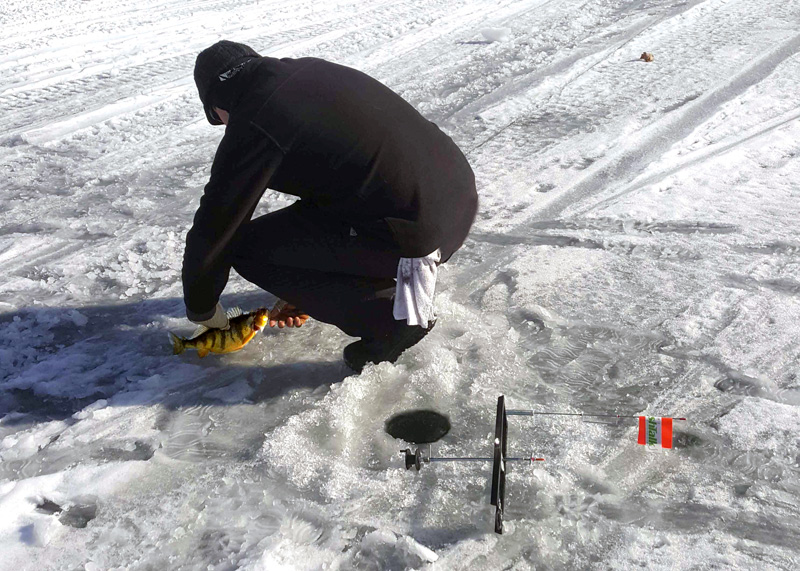If we get a decent Mid-Atlantic ice fishing season this year, many anglers will employ tip-ups. But these much-maligned devices are anything but set-it-and-forget-it pieces of equipment. In fact, how you use your tip-ups will make a huge difference in the catch. To be sure your flags start flying, remember:
- Set out a line of tip-ups to go down a drop-off or along an edge. One or two will usually go off more than the others, which is your sign to relocate the fleet of flags to the same depth range or contour.
- Every few minutes, walk through the field of un-triggered flags. As you go by each, slowly lift it out of the hole a foot or two, drop it back down, then raise it again. Often this little bit of jigging will trigger a strike.
- When the bite is slow, every half-hour or so, grab this tip-up or that one and crank eight or 10 inches of line up. Later, crank in a bit more and after that, drop it down some again.
- If a flag pops up but there’s no fish on the line, don’t just re-set the tip-up and walk away. Quite often, the fish that initially attacked will still be close by. Other times, the minnow on your hook gets very excited (as in, he’s being chased by a predator), and triggers the flag before the fish even strikes. In either case, you have a good shot at triggering an attack if you grasp the line in your fingers, and begin slowly jigging it.
- If a flag pops up and you’re close enough to grab it immediately, don’t. Many predators will chomp down on a minnow and trigger the tip-up before they have the bait all the way in their jaws. So look at the spool and see if it’s spinning. If so, let the fish run for a moment or two. Quite often after the flag first goes up you’ll see the spool spin for three to five seconds, then slow or stop – that’s the ideal time to grab the line and set the hook.
